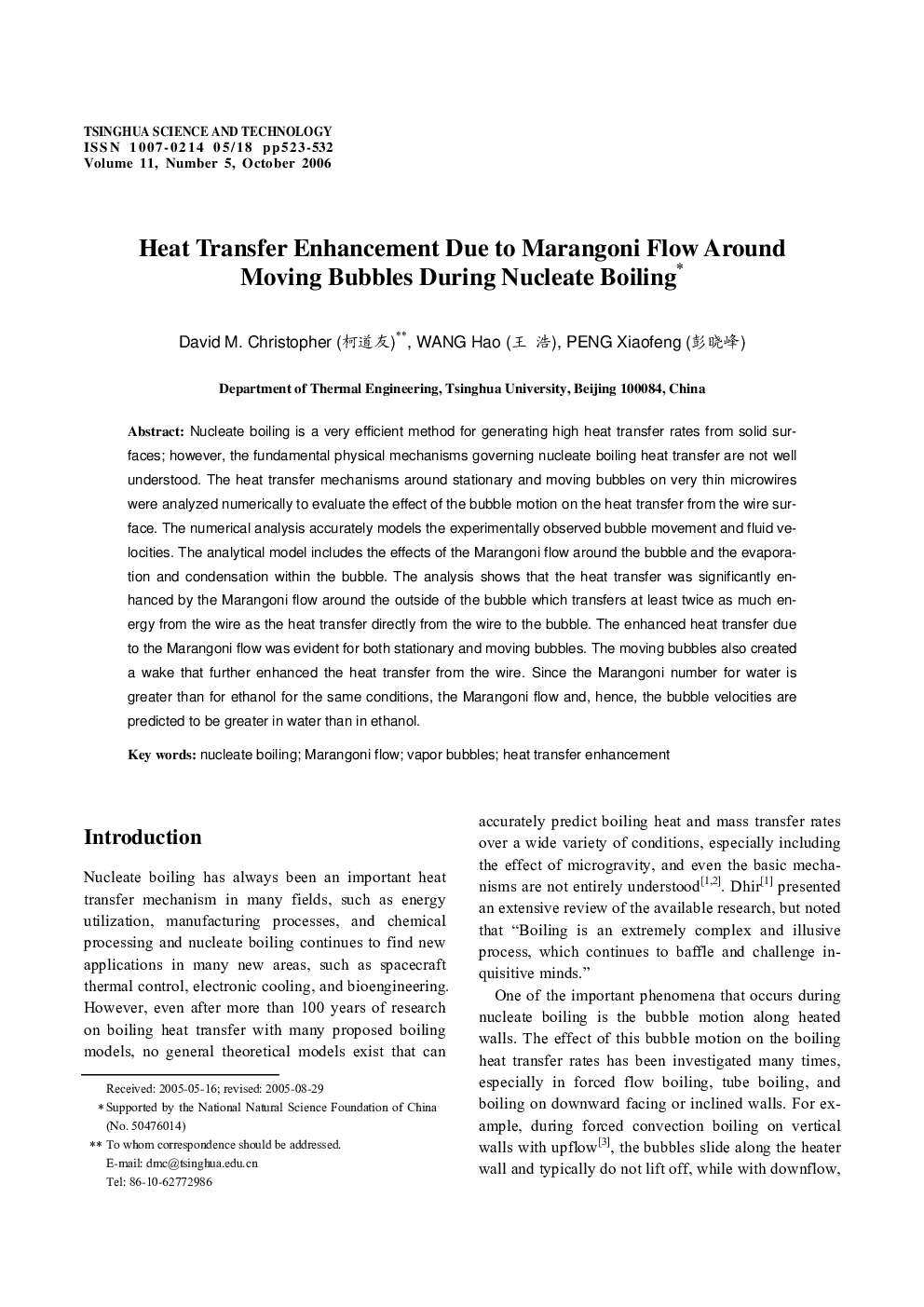| Article ID | Journal | Published Year | Pages | File Type |
|---|---|---|---|---|
| 866044 | Tsinghua Science & Technology | 2006 | 10 Pages |
Abstract
Nucleate boiling is a very efficient method for generating high heat transfer rates from solid surfaces; however, the fundamental physical mechanisms governing nucleate boiling heat transfer are not well understood. The heat transfer mechanisms around stationary and moving bubbles on very thin microwires were analyzed numerically to evaluate the effect of the bubble motion on the heat transfer from the wire surface. The numerical analysis accurately models the experimentally observed bubble movement and fluid velocities. The analytical model includes the effects of the Marangoni flow around the bubble and the evaporation and condensation within the bubble. The analysis shows that the heat transfer was significantly enhanced by the Marangoni flow around the outside of the bubble which transfers at least twice as much energy from the wire as the heat transfer directly from the wire to the bubble. The enhanced heat transfer due to the Marangoni flow was evident for both stationary and moving bubbles. The moving bubbles also created a wake that further enhanced the heat transfer from the wire. Since the Marangoni number for water is greater than for ethanol for the same conditions, the Marangoni flow and, hence, the bubble velocities are predicted to be greater in water than in ethanol.
Related Topics
Physical Sciences and Engineering
Engineering
Engineering (General)
Authors
David M. (æ¯éå), Wang (ç 浩), Peng (å½æå³°),
